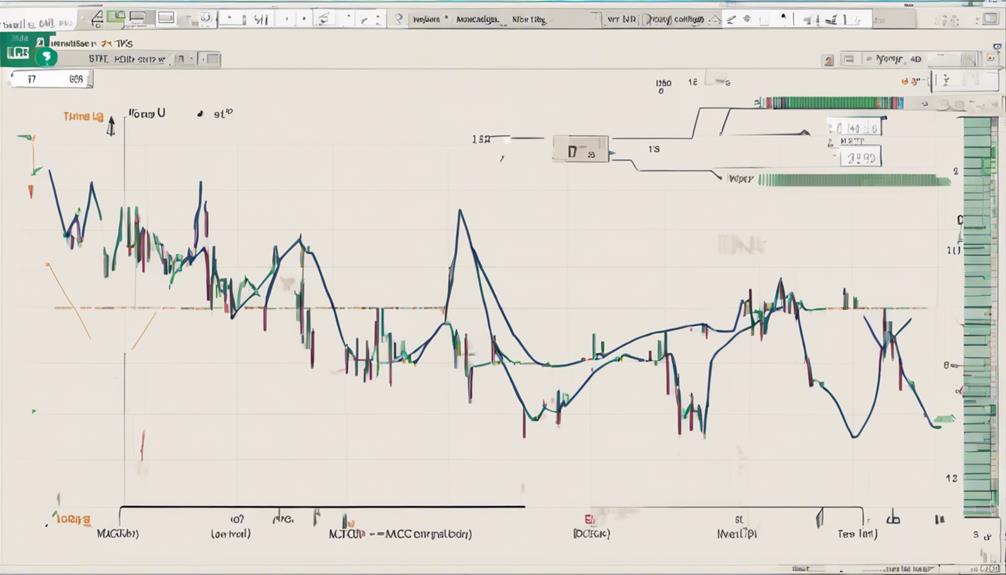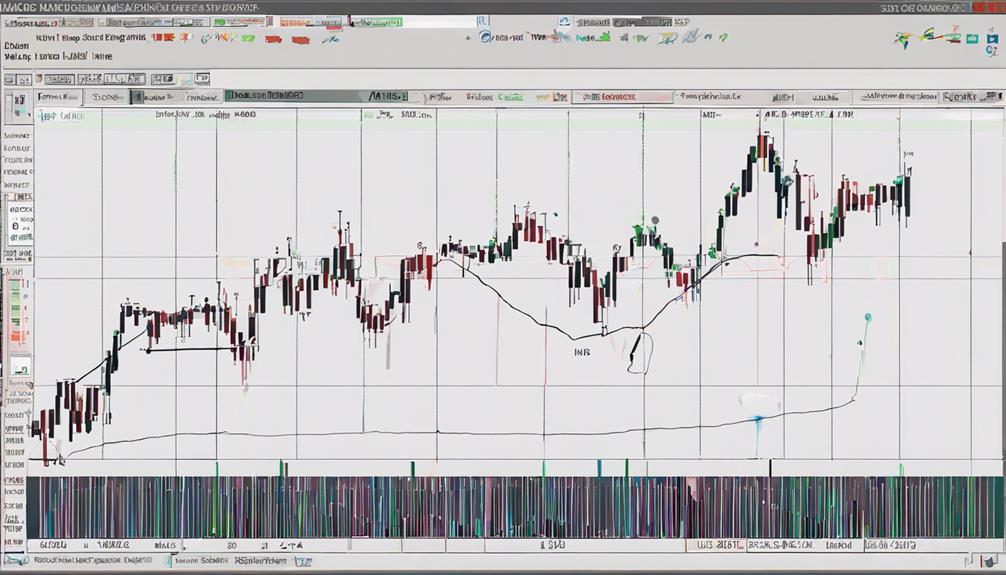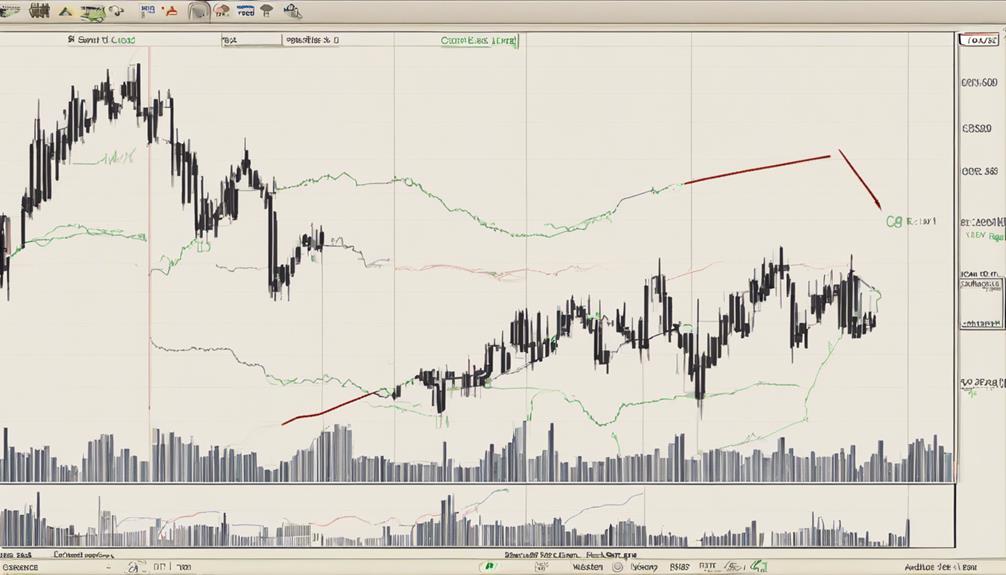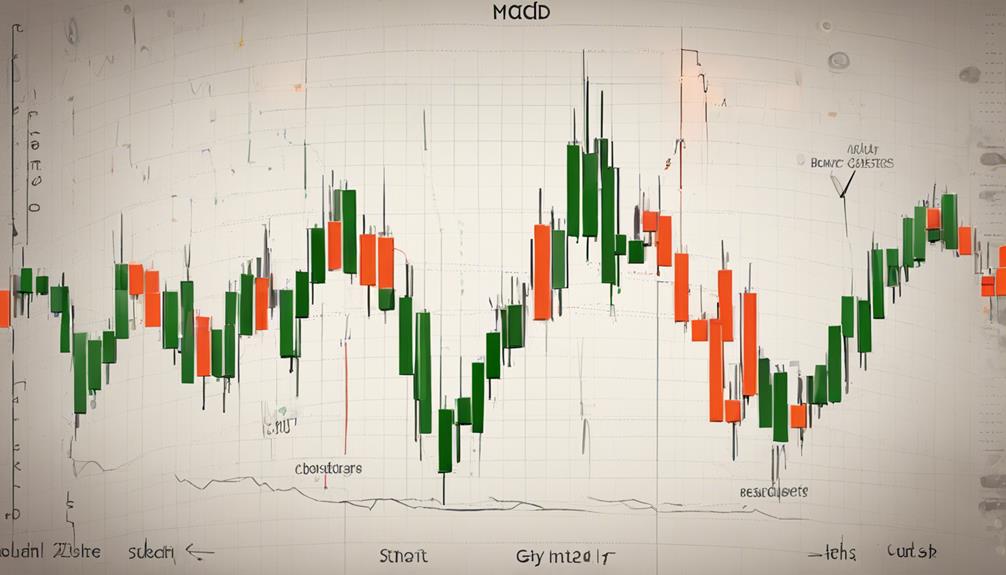When navigating the intricate landscape of technical analysis, have you ever pondered on the intricacies of the MACD indicator?
Unveiling the secrets embedded within this powerful tool can significantly enhance your trading prowess.
By unraveling its nuanced calculations, decoding its signals, and understanding its dynamic nature, you are poised to make more informed decisions in the volatile world of financial markets.
Join us as we dissect the MACD indicator, offering you a gateway to a realm of strategic insights and practical applications that could potentially transform your trading endeavors.
MACD Indicator Essentials
To understand the essence of the MACD indicator, grasp its fundamental calculation method and key components.
The MACD, a widely used technical indicator in trading, derives from the difference between the 12-period Exponential Moving Average (EMA) and the 26-period EMA. This calculation provides insight into the momentum of price movements.
Additionally, the MACD Signal Line, represented by a 9-day EMA of the MACD line, plays a crucial role in identifying potential trends.
Traders often utilize the MACD to pinpoint overbought or oversold conditions, as well as to anticipate price reversals.
Keep a close eye on the MACD crosses, where the MACD line intersects the Signal Line, as they can indicate shifts in momentum and potential trading opportunities.
Understanding MACD Formula

Understanding the MACD Formula involves deciphering the mathematical relationship between the 12-period and 26-period Exponential Moving Averages (EMAs). Here are some key points to help you grasp the essence of the MACD Formula:
- The MACD formula subtracts the 26-period EMA from the 12-period EMA.
- The MACD line shows the difference between these two EMAs.
- A Signal Line, a 9-day EMA of the MACD line, assists in identifying buy or sell signals.
- Exponential Moving Averages in the MACD formula prioritize recent price data, aiding in detecting trend changes accurately.
Understanding these components is crucial for interpreting divergence, crossovers, and potential buy or sell signals effectively.
Analyzing MACD Crossovers

Analyzing MACD crossovers provides valuable insights into potential buy or sell opportunities based on the interactions between the MACD Line and the Signal Line. A bullish crossover, where the MACD Line surpasses the Signal Line, suggests a possible uptrend, indicating a favorable time to buy.
On the other hand, a bearish crossover, occurring when the MACD Line falls below the Signal Line, may signal a downtrend, prompting a potential selling opportunity. Traders often utilize these crossovers as part of their trading strategies for entering or exiting positions.
Interpreting MACD Divergence

MACD Divergence serves as a crucial indicator for traders, highlighting potential trend reversals through the observation of price movements versus MACD readings.
When interpreting MACD Divergence, traders should understand Bullish Divergence, where price makes lower lows while MACD forms higher lows, and Bearish Divergence, where price creates higher highs while MACD forms lower highs.
These divergence signals in MACD can provide early warnings of price reversals or trend changes, helping traders confirm trade setups and anticipate potential shifts in market direction.
Practical MACD Trading Strategies

To effectively implement Practical MACD Trading Strategies, traders often rely on a combination of technical analysis tools to enhance decision-making and optimize their trading outcomes.
The MACD Crossover Strategy involves buying when the MACD line crosses above the Signal Line and selling when it crosses below, signaling potential trend changes.
The Double MACD Strategy combines two MACD indicators to confirm trend reversals, providing more precise signals for traders.
Utilizing the MACD Range Trading strategy allows traders to make decisions based on buying at support levels and selling at resistance levels indicated by MACD signals.
Moreover, the MACD Divergence Strategy helps identify possible trend reversals by analyzing inconsistencies between price movements and MACD indicators.
For traders seeking to gauge market strength and momentum, the MACD Volume and Impulse Trading strategy integrates MACD with volume indicators to make informed trading choices.
Can You Explain How to Decode MACD Indicator Signals in Technical Analysis?
Decoding signals in MACD indicator is crucial in technical analysis. When the MACD line crosses the signal line from below, it is a bullish signal. Conversely, when the MACD line crosses the signal line from above, it is a bearish signal. These signals help traders identify potential buy and sell opportunities.
Frequently Asked Questions
How Do You Interpret MACD Indicators?
When interpreting MACD indicators, you analyze crossovers between the MACD line and Signal Line. Bullish signals occur when MACD line crosses above Signal Line, suggesting buy opportunities. Bearish signals happen when MACD line crosses below, indicating potential sells.
How Do You Use MACD Indicator Effectively?
To use the MACD indicator effectively, you need to watch for crossovers between the MACD line and the signal line. This crossover can provide entry and exit points for trades, helping you capitalize on potential trend shifts efficiently.
How Do You Read Two Lines on Macd?
To read the two lines on MACD, observe the MACD line crossing above the signal line for a bullish indication and below for a bearish one. Analyze the distance between the lines for momentum insights. Look for crossovers and divergences to guide trading decisions effectively.
How Do I Read MACD on Different Timeframes?
When reading MACD on different timeframes, you observe varying trend strengths and durations. Shorter timeframes offer quick changes for intraday trading, while longer ones show broader trends for swing traders. Adjust MACD settings to suit your strategies.
Conclusion
You have now unlocked the power of the MACD indicator for technical analysis. By mastering its essentials, understanding the formula, and applying practical strategies, you're equipped to make informed trading decisions.
But, as you navigate the markets with MACD, remember to ask yourself: Are you ready to harness the full potential of this versatile tool to enhance your trading success?
